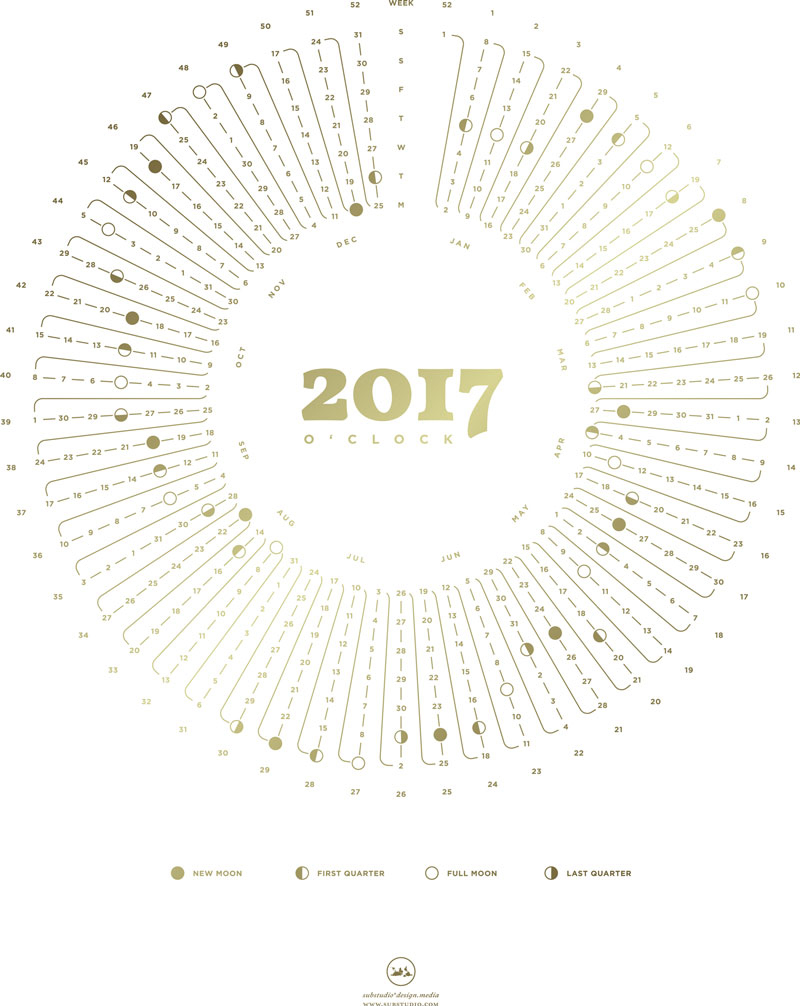
This Article From Issue
January-February 2017
Volume 105, Number 1
Page 10
DOI: 10.1511/2017.124.10
The Moon by the Clock: The illuminated portion of the Moon visible to Earthbound observers changes shape as it orbits. Although tidal locking with Earth results in the same lunar surface always facing our planet, the Moon cycles through lunar phases that vary in visibility, from 100 percent (when the Moon is full) to 0 percent (when the Moon is new, or invisible from Earth), nearly every 14 days. The “2017 o’clock” Moon calendar is graphic designer Michael Paukner's visualization of the yearly calendar using inspiration from astronomy. The graphic depicts the year’s 52 weeks and 365 days on a clockwise annual trip around the Sun and shows the dates when the Moon is new, in its first quarter, in its second quarter, and full.


American Scientist Comments and Discussion
To discuss our articles or comment on them, please share them and tag American Scientist on social media platforms. Here are links to our profiles on Twitter, Facebook, and LinkedIn.
If we re-share your post, we will moderate comments/discussion following our comments policy.